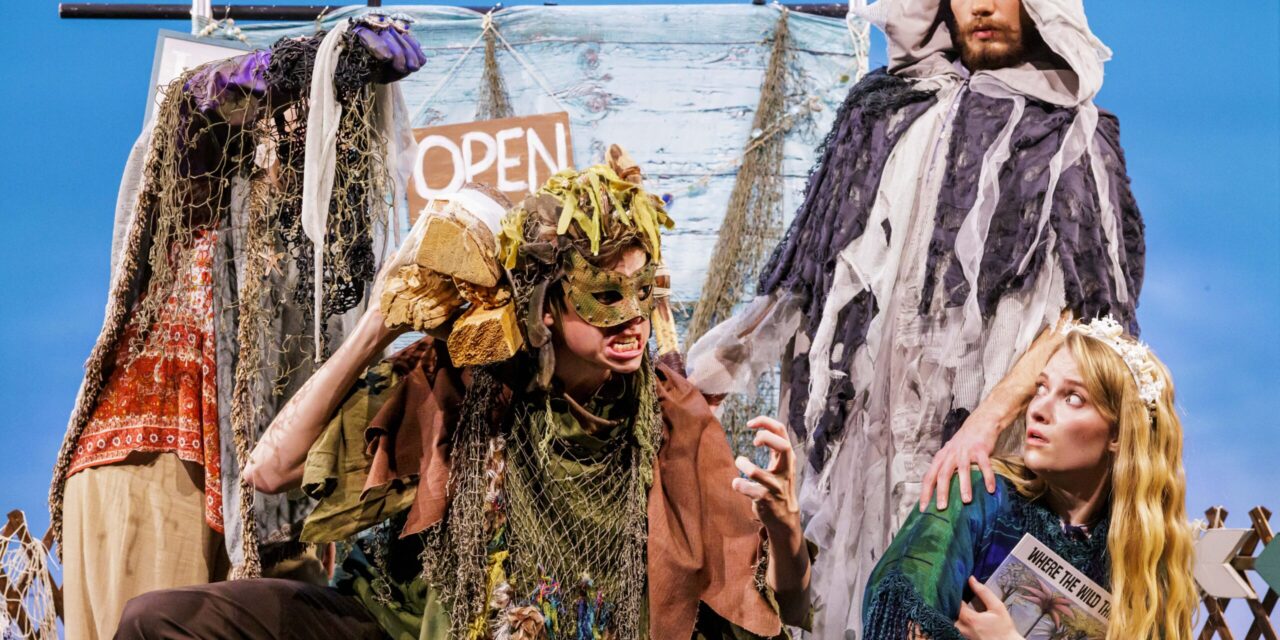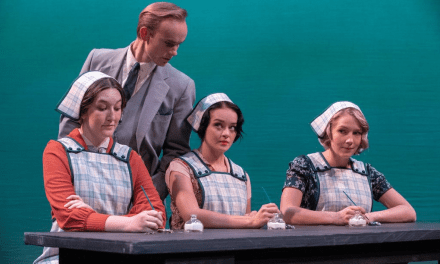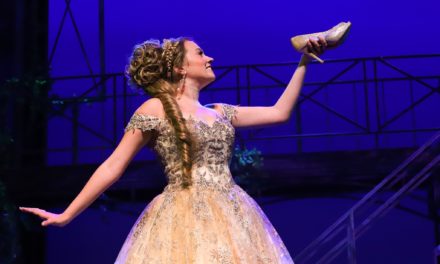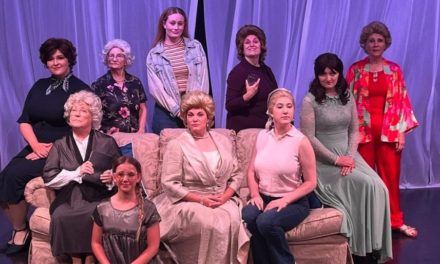PROVO — While many of William Shakespeare’s plays make references to magic, those that have plots centered on magic are few. It takes a special kind of sorcery to tap into the supernatural elements of the Bard of Avon’s The Tempest and an even more dab hand to make the play accessible for children. Fortunately, director Teresa Love, is something of a wizard at this sort of thing.
Before entering the theatre, the abandoned island world of the tempest is introduced to all. Displays from dramaturg Aislyn Dyer revealed interesting ways to understand the performance, and tactile engagement activities such as a sandbox with shells and sea glass was available for kids to play with and help mentally set the stage for the performance.
The studio theatre at BYU’s West Campus where I recently saw House of Desires was transfigured for this BYU Young Company production to appear like a sea side snack shanty. Towels, folding chairs, pails, and other beachside accoutrement were somewhat haphazardly spread across the stage to give a playing space for the actors. Sections of the floor were taped out to allow audience members, usually — but not always — children, to be close spectators and participants to the performance. Designer Kim Wright successfully designed a look that felt both appropriate to the studio stage and while being able to tour to local elementary schools.

The Tempest plays at BYU until April 13, 2024. | Photo Credit: Donovan Kelly/BYU
A concern with Shakespeare for youth is that you can lead the horse to water, but not make them drink. The Tempest, however, was immediately enticing and engaging. Preshow, the actors were helping engage the audience right away, encouraging them to bark like dogs when key words in the story were said. They engaged audience members as they arrived and and helped the experience feel like a gradual transition to a new experience rather than a plunge into a play. When the show began, it felt like a callback to another Love directed Young Company show — Water Sings Blue in 2015. Actors took their time simply being in the space and making small talk about the events of the show. I felt at first that this was going to be a major departure from Shakespeare and The Tempest, even a TYA adaptation, that I expected.
When the story did come on line, clever use of costuming and masks enabled the broad strokes of the story to come together. With just five actors playing so many parts in a fairly complex story creativity and audience clarity was essential. Girls from the audience were brought up to represent the deceitful Antonio and were given crowns to set them apart. They remained on stage and given lines through the production. At other times, children and adults were utilized to create a conga line of sorts to help accentuate the emotion even more than the narrative of the story.
I loved Blake Haskett’s acting in the story. He is a tall man who filled the small stage with his presence. What was more impressive, however, was how long it took me to track who all he was playing. The design elements weren’t complex, but Haskett stood out in his deeply contrasted physicality in the different characters he portrayed. When he was the accursed Caliban, he walked in a deep squat and had a wide base. As Ferdinand and and Din — the contemporary alter ego, the characters had similar gaits, but seemed to hold themselves differently as if there was a change of status or self-confidence between the two.
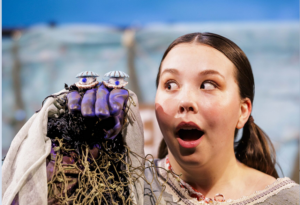
Photo Credit: Donovan Kelly/BYU
Love’s directing wizardry shone in the details of condensing and simplifying the story. So much of this came through simple choices, and prioritizing key moments. The choice to make Ariel, the sprite, a hand puppet was delightful. I loved the use of a hula hoop as a the “magic ring” which Prospero traps his enemies in. The moments in the play that spoke about forgiveness as a better choice than vengeance were given time and clarity to reach all audience members. In a show that can be wordy and is not one of the Shakespeare plays that is as present in the public ken as Romeo and Juliet or A Midsummer Night’s Dream, Love has found a simple story of power and forgiveness to tell.
I worried, even as someone whose kids are well versed in theatre and Shakespeare, that the story would be too complex. In the beginning I felt a little lost trying to string the story together. My young guests, however, dove right in and grasped the relationships, themes, and overarching story that the Young Company had. This production of The Tempest is a great way to get your feet wet in Shakespeare and theatre for youth.

This review was generously sponsored by a grant from the Provo City Recreation, Arts, and Park (RAP) grant.

